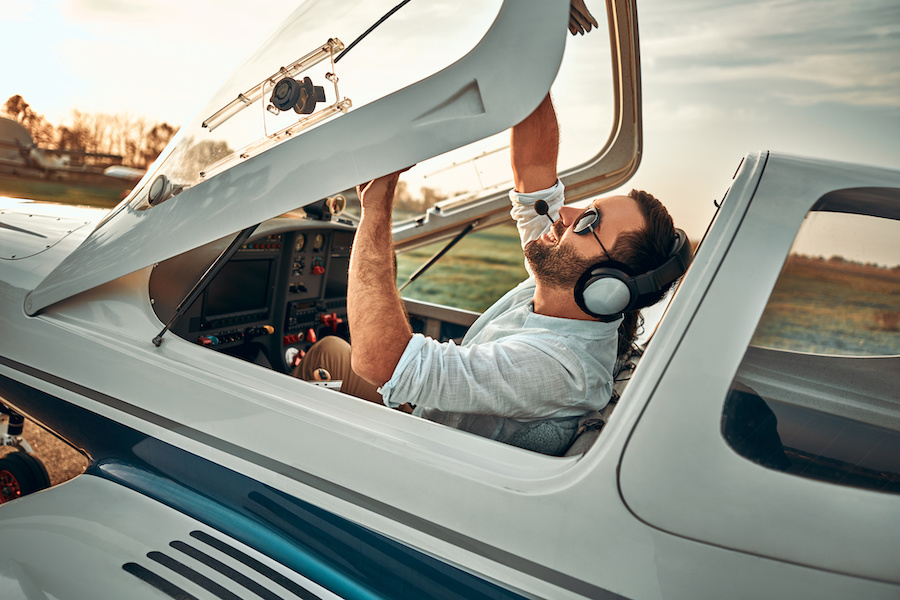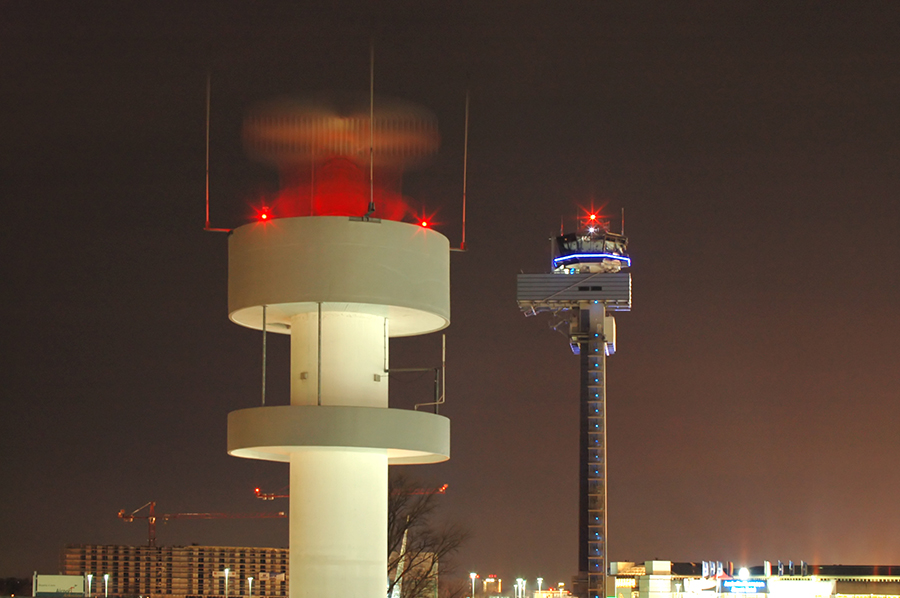-
The Difference Between In-Ear and Over-Ear
-
The Difference Between ANR and PNR
-
What is TSO Certification?
-
Best Active Noise Reduction (ANR) Aviation Headsets
- 1. Bose A20
- 2. Lightspeed Zulu 3
- 3. David Clark DC ONE-X
- 4. Lightspeed Sierra
-
Best Passive Noise Reduction Headsets
- 1. David Clark H10-13.4
- 2. Kore Aviation KA-1
- 3. ASA HS-1
- 4. Rugged Air RA200
-
Best In-Ear Aviation Headsets
- 1. Bose ProFlight Series 2
- 2. AXIS In-Ear Aviation Headset
- 3. Clarity Aloft Flex
-
Conclusion
Over-ear, on-ear, or in-ear? Bluetooth, 3.5mm, or no input? Active Noise Reduction or Passive Noise Reduction? $1,000 or $400?
With the number and variation of aviation headsets available on the market today, choosing the right headset for you can be a daunting task. We’re here to make it easy.
If you’re solely interested in the best aviation headset on the market, look no further than the renowned Bose A20.
Best Value Aviation Headset: Lightspeed Sierra.
Cheapest Aviation Headset: Rugged Air RA200.
This review will include three headset categories:
- Active Noise Reduction (ANR) Headsets
- Passive Noise Reduction (PNR) Headsets
- In-Ear (ANR or PNR) Headsets
That’s a lot of jargon you may not be familiar with; Let’s explain.
Note: As an Amazon Associate Pilot Institute may earn compensation from link clicks on this page. This does not increase the cost for you.
The Difference Between In-Ear and Over-Ear
Aviation headsets come in three primary forms:
- Over-Ear: covers your ears completely and creates a seal around them.
- On-Ear: rests on top of your ears, covering your ear canal.
- In-Ear: earplug-style headphones that are inserted into your ear canal.
Over-ear aviation headsets are the most common, followed by in-ear and, least commonly, on-ear.
Which style you find most comfortable is a personal decision; the only way to know which type you like the most is to try them all. Your local pilot shop should have some on display for you to try.
The Difference Between ANR and PNR
All aviation headsets block out some level of noise. Cockpits, particularly in general aviation aircraft, are too loud to facilitate normal communication between crew and Air Traffic Control (ATC).
Active Noise Reduction (ANR) and Passive Noise Reduction (PNR) refer to the method by which a headset blocks sound (i.e., reduces noise).
Passive Noise Reduction (PNR) headsets block sound by covering your ears with the headset (over-ear) or by inserting earplug-style headphones in your ears (in-ear).
Active Noise Reduction (ANR) uses microphones on the headset to determine the incoming outside sound, then the inverse (opposite) of that sound is fed into the headset, effectively “canceling” the outside noise. To accomplish this, the headset requires a power source, usually consisting of two AA batteries. ANR headsets block sound through a combination of PNR and ANR.
What is TSO Certification?
Technical Standard Order (TSO) is a minimum headset performance standard outlined by the Federal Aviation Administration (FAA). No regulation requires headsets to be TSO certified, but some commercial operators such as airlines require their pilots to use TSO-certified headsets. If you are a commercial pilot, check your company’s policy on TSO certification before purchasing a headset.
Best Active Noise Reduction (ANR) Aviation Headsets
1. Bose A20
Top Pick: Unparalleled noise cancellation and sound quality.
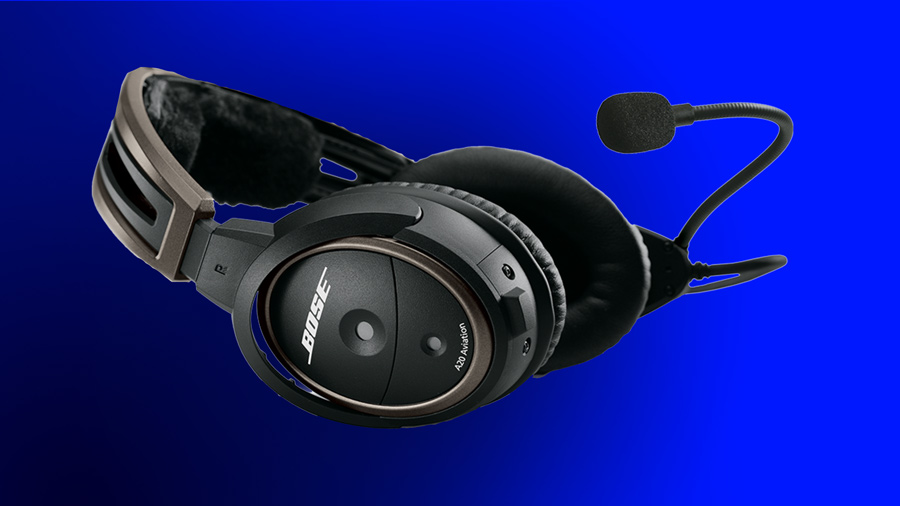
Specs
- 45 hour battery life
- Over-ear
- Active noise reduction
- Bluetooth & 3.5mm
- 12 oz (340 grams)
- 5-year warranty
- Synthetic Leather Pads
Pros
- Unmatched noise cancellation
- Excellent battery life
- Outstanding audio and microphone quality
- Lightweight
- TSO certified
Cons
- Expensive
- Slightly plastic feel
The Bose A20 has dominated the aviation headset market for years, and for a good reason – it is remarkably good. While this level of quality comes at a price, your ears will thank you.
The Bose A20 features arguably the best noise canceling and sound quality of any aviation headset on the market. Paired with its Bluetooth capability, you’ll have no trouble hearing ATC or listening to AC/DC.
Two AA batteries provide 45 hours of battery life, falling short of only two other high-end headsets on the market – The David Clark PRO-X2 and ONE-X. If you are in a bind and run out of battery, you’ll still be able to use the headset without Bluetooth or noise cancellation.
If you fancy keeping the Bluetooth turned off, you can opt to use the 3.5mm audio input jack. If you don’t see yourself using the Bluetooth feature, you can purchase the A20 without Bluetooth capability for a slightly lower price.
Additionally, the Bose A20 is TSO certified, a requirement for certain commercial operators.
The Bose A20, while well-built and not flimsy (ask the numerous pilots who have accidentally flung it across an apron), does have a plastic feel – owed to its lightweight and comfortable fit. If the plastic components and high price are likely to bother you, the Lightspeed Zulu 3 is a good alternative.
The Lightspeed Delta Zulu headset are a viable alternative to the Bose A20s.
2. Lightspeed Zulu 3
Best Alternative: A premium alternative to the Bose A20.
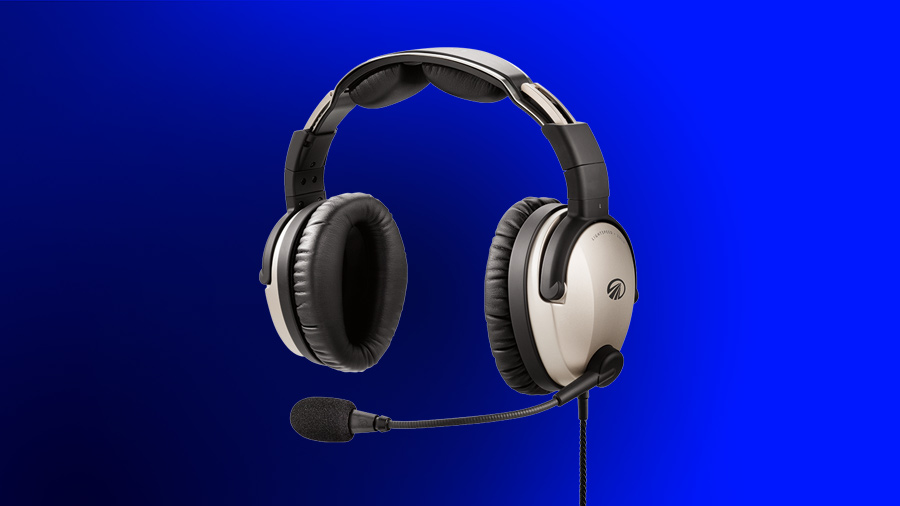
Specs
- 40 hour battery life
- Over-Ear
- Active Noise Reduction (ANR)
- Bluetooth & 3.5mm
- 14.6 oz (414g)
- 7-Year Warranty
- Synthetic Leather Pads
Pros
- Cheaper than the Bose A20
- Long Warranty
- Large ear cups
- Kevlar wrapped cable
Cons
- Heavy
The Lightspeed Zulu 3, at $800, gives the Bose A20 a good run for its money.
Built of primarily stainless steel and magnesium and featuring a Kevlar-wrapped cable, the Lightspeed Zulu 3 is built with longevity in mind.
Lightspeed also aren’t afraid to put their word behind the durability of their product; The Zulu 3 comes with a 7-year warranty, compared to Bose A20’s 5.
The Zulu 3 is visually larger and slightly heavier than the Bose A20. The advantages to these trade-offs are larger ear cups and a curved surface, allowing for a better seal compared to the smaller flat surface of the Bose A20.
While the sound quality and noise cancellation are excellent, the Bose A20 still outperforms the Zulu 3.
The Lightspeed Zulu 3 is an excellent alternative to the more expensive Bose A20, and you will prefer one over the other based on sound and feel. Regardless of which one of the premium picks you go for, you’ll thank yourself when you experience the difference a premium headset can make.
3. David Clark DC ONE-X
Best Battery Life: The battery life king from a classic brand.
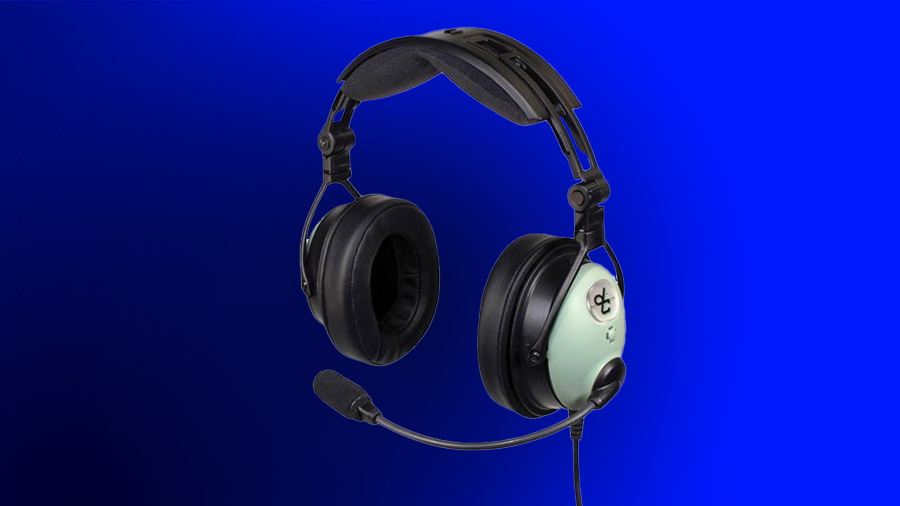
Specs
- 50 hour battery life
- Over-ear
- Active Noise Reduction (ANR)
- Bluetooth
- 12.3 oz (349g)
- 5-Year Warranty, 30-Day Money Back Guarantee
- Synthetic Leather Pads
Pros
- Excellent battery life
- Lightweight
- Great PNR
- TSO certified
Cons
- No audio input (Bluetooth only)
- Slightly inferior microphone and audio quality
The David Clark company has been making headsets for dozens of years and built a superb reputation in the process, so it should be no surprise that they have taken note of the Bose A20’s success. The David Clark DC ONE-X is their reply, and they did not disappoint.
The David Clark DC ONE-X features a stunning 50-hour battery life, greater than any other ANR headset. And even if you somehow manage to run out of battery life, the PNR won’t let you down; The DC ONE-X features the best PNR of any ANR headset.
As a bonus: The DC ONE-X is also TSO certified.
The DC ONE-X doesn’t come without shortcomings, though. The Bose A20 and Lightspeed Zulu 3 jump ahead of the DC ONE-X regarding audio and microphone quality, but you may not even notice the difference unless you directly compare them. The DC ONE-X is also the only headset on the ANR list that doesn’t have audio input capability, meaning you can only use Bluetooth to listen to external audio.
Overall, the DC ONE-X is an excellent buy, backed by a brand that has spent years in the aviation headset game.
4. Lightspeed Sierra
Best Value: Jump into the ANR pool without drowning.

Specs
- 40 hour battery life
- Over-ear
- Active Noise Reduction (ANR)
- Bluetooth & 3.5mm
- 16 oz (454g)
- 5-Year Warranty
- Synthetic Leather Pads
Pros
- High-end features at a mid-range price
Cons
- Not as comfortable as higher-end headsets
- Heavy
If you’d like a high-quality Active Noise Reduction (ANR) headset without spending over $800 for the Lightspeed Zulu 3 or Bose A20, the Lightspeed Sierra is the perfect choice.
The Lightspeed Sierra features great noise cancellation, Bluetooth connectivity, dual volume controls, audio input, a 40-hour battery life, and a carrying case – all the bells and whistles of the high-end ANR headsets packed into an enticing $650 price tag.
As you may expect, the Sierra’s audio quality and noise cancellation is no match for the more expensive headsets, but it is respectable for the price.
Furthermore, while the Sierra is by no means uncomfortable, you may notice that the higher-end headsets have less clamping force, a better seal, and are lighter.
While the Sierra puts up a superb fight against its more expensive siblings, it will be up to you to decide if the roughly $250 in savings is worth it – particularly if you spend large amounts of time in an aircraft.
Best Passive Noise Reduction Headsets
1. David Clark H10-13.4
Best Budget: A classic headset that stands the test of time.

Specs
- No battery (Passive Noise Reduction Only)
- Over-ear
- No audio input
- 16.5 oz (468g)
- 5-year Warranty
- Gel Pads
Pros
- Great value for money
- Durable
- Good audio and microphone quality
- TSO certified
Cons
- Noise cancellation is not comparable to ANR headsets
- No Bluetooth or external audio input
If you’re looking for an affordable headset that will last you a lifetime, look no further than the classic David Clark H10-13.4.
The H10-13.4 features robust build quality, a staple of the David Clark brand. Of all the headsets reviewed in this article, the David Clark is the most reliable and likely to last the longest.
The gel pads are a departure from the synthetic leather pads of the more expensive ANR headsets but are comfortable regardless.
The passive noise reduction of the H10-13.4 doesn’t compare to the active noise reduction of the more expensive headsets, but it gets the job done.
A dealbreaker may be that the H10-13.4 has no Bluetooth or external audio input, meaning there is no way to listen to external audio.
If the $450 price tag is over your budget, the David Clark H10-13.4 is an excellent deal when bought second-hand due to its durability. If you purchase new gel, head, and microphone pads (roughly $60), you practically have a new headset.
Even if you have the budget for a more expensive headset, the H10-13.4 should be a serious consideration if you do not fly often or are a student pilot. You can always purchase a more expensive ANR headset later and keep the H10-13.4 as a secondary headset for passengers or sell it – they are in high demand.
2. Kore Aviation KA-1
Best Passenger Headset: All the bells and whistles at half the price.
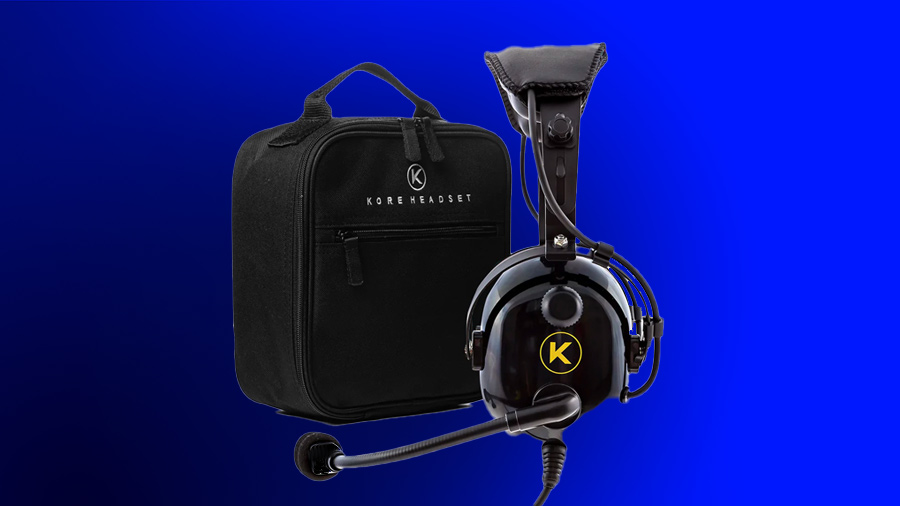
Specs
- No battery (Passive Noise Reduction Only)
- Over-ear
- 3.5mm
- 22 oz (624g)
- 5-year Warranty
- Gel Pads
Pros
- Inexpensive
Cons
- Very heavy
- Not as reliable as more expensive headsets
At under $200, the Kore Aviation KA-1 headset is a great choice for budget-conscious aviators.
The Kore Aviation name may not be as well-known as David Clark or Bose, but the family-owned company has been producing aviation communication equipment for over 30 years. Their customer service reflects this, as many of their customers can attest.
Unfortunately, the KA-1 doesn’t feature the level of durability and build quality of the more expensive David Clark H10-13.4. As such, you will likely have to make use of the 5-year Warranty if you intend to use the KA-1 for many hours.
The KA-1 is comfortable despite being on the heavier side at 22 oz (624g) and features a 3.5mm external audio input (A feature that is notably missing from the more expensive David Clark H10-13.4).
While the KA-1 is a great stepping stone for pilots who don’t want to spend a significant amount on a headset initially, you will need to purchase a more durable headset for long-term use. The KA-1 is also a great option as a “passenger” headset that will be used infrequently.
3. ASA HS-1
Cheap Headset: A lifetime warranty at under $150.

Specs
- No battery (Passive Noise Reduction Only)
- Over-ear
- No audio input
- 12 oz (340g)
- Lifetime Warranty
- Foam Pads
Pros
- Lifetime warranty
- Light
Cons
- No microphone foam cover
- Short cord
- Foam pads
- No external audio input
What the ASA HS-1 lacks in features, it makes up for in its $140 price tag and lifetime warranty.
The ASA HS-1 is a great entry-level headset that is built to last and should be a serious consideration if the David Clark H10-13.4 is outside of your price range.
While the HS-1 gets the basics of audio, microphone, and quality right, it falls short at other additional features such as an external audio input or even a microphone foam cover – items that come standard with nearly every headset on this list.
Whether the feature concessions are worth the lower price tag is up to you to decide.
4. Rugged Air RA200
Gets the job done at a two-digit price tag.
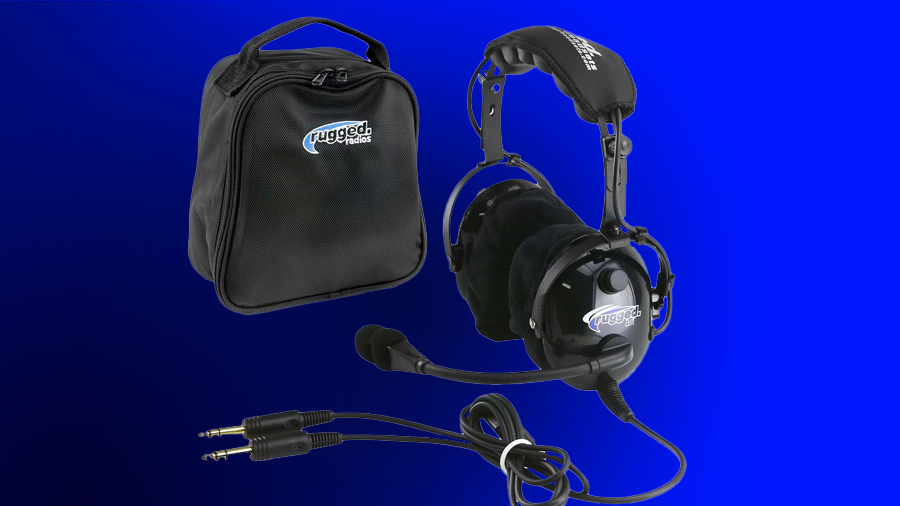
Specs
- No battery (Passive Noise Reduction Only)
- Over-ear
- 3.5mm
- 19 oz (544g)
- 7-year Warranty
- Foam Pads
Pros
- Under $100
- External audio input
Cons
- Subpar microphone and audio quality
- Uncomfortable after a few hours
For less than it costs to fill up your car, you can have an aviation headset. The Rugged Air RA200 is the choice of aviation headset if you are getting into aviation and don’t want to borrow a headset or want a headset for the seldom occasion that you take passengers.
At under $100, you can’t expect much from the RA200, but that doesn’t mean it fails to do the job. The RA200 boasts a 7-year warranty and 3.5mm external audio input, with respectable noise reduction.
Unfortunately, the RA200 is not very comfortable due to the amount of clamping required for the Passive Noise Reduction, and the microphone and audio quality do not compare to more expensive headsets.
Overall, the RA200 is a great option if you want an entry-level headset with satisfactory quality and durability.
Best In-Ear Aviation Headsets
1. Bose ProFlight Series 2
Best In-ear: A premium in-ear headset built with commercial pilots in mind.
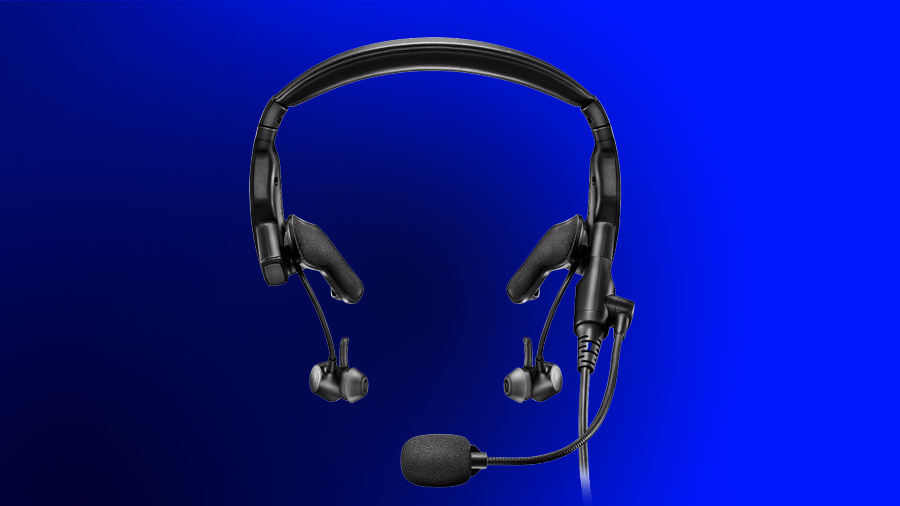
Specs
- 45 hour battery life
- Active Noise Reduction (ANR)
- In-ear
- Bluetooth
- 4.5 oz (128g)
- 5-year Warranty
- Gel Tips
Pros
- Comfortable
- Unmatched noise canceling
- Excellent battery life
- TSO certified
Cons
- Expensive
- Audio quality and noise reduction not as good as the A20
If you’re tired of over-ear headsets and want to give in-ear a try, the Bose ProFlight Series 2 is the best money can buy.
The ProFlight uses ANR in combination with the PNR seal the earbuds provide. This combination of earbud-like tips and large headset style ANR allows for superb noise cancellation.
At 4.5 oz (128g), the ProFlight is light compared to traditional headsets and extremely comfortable. Add that to the ability to wear a cap or glasses without breaking the ANR seal (like you would on conventional headsets), and the ProFlight seems like an obvious choice, right?
Unfortunately, as the ProFlight Series 2 is roughly the same price as the A20, comparisons between the two are inevitable. If you are familiar with the A20, you will be disappointed with the noise cancellation and sound quality of the ProFlight, as it doesn’t quite match the A20.
The ProFlight Series 2 was designed with commercial pilots in mind, as they tend to fly quieter turbine aircraft for hours every day. High-level noise reduction is not necessary in these conditions, but comfort is essential.
Despite the A20 inching slightly ahead overall, the Bose ProFlight Series 2 is the best in-ear headset on the market today and well worth the price.
2. AXIS In-Ear Aviation Headset
Best Budget In-Ear: Exceptional customer service, comfort, and noise reduction at a mid-range price.
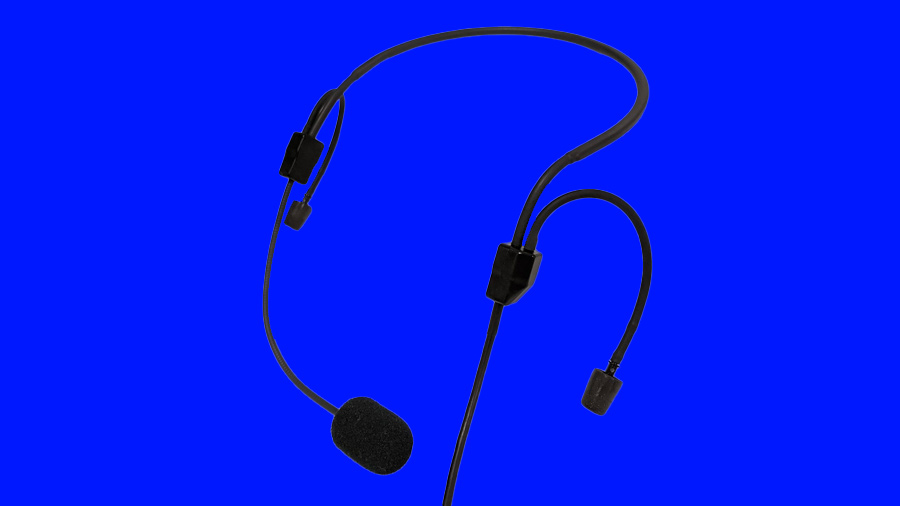
Specs
- No battery (Passive Noise Reduction Only)
- In-ear
- 3.5mm
- 1 oz (28g)
- 3-year Warranty, 30-Day Money Back Guarantee
- Foam Tips
Pros
- Outstanding customer service
- Weighs as much as one AA battery
- Great value
- Durable
Cons
- Foam tips need to be replaced every few months
If you want all the benefits of an in-ear headset without paying the $1,000 for the Bose ProFlight Series 2, the AXIS should be a serious consideration.
Coming in at $475, the AXIS rubs shoulders with mid-range over-ear headsets such as the David Clark H10-13.4. In many ways, however, the AXIS is in its own league.
Firstly, the entire headset weighs roughly as much as a single AA battery. Combined with the flexible frame, the clamping force is reduced to virtually zero.
Additionally, AXIS is a family-owned business, and their customer service reflects this. The AXIS website has a dedicated section demonstrating how to use the AXIS optimally, complete with videos and graphics as well as links to download the quick reference card and user manual.
The AXIS has a 30-day money-back guarantee, and a three-year warranty, made even more attractive considering you won’t have to talk to a robot if you have any questions or need to repair your headset.
The foam tips need to be replaced every few months depending on how much you use the headset. Luckily, AXIS don’t use proprietary foam tips, meaning you can purchase the style and size of tips that suit you. A list of recommended tips is available on their website.
The AXIS team reportedly has a Bluetooth version of their headset in the works, and they will allow customers who currently own an AXIS headset to trade up to the Bluetooth version for a reduced price.
3. Clarity Aloft Flex
TSO certification without the Bose price tag.
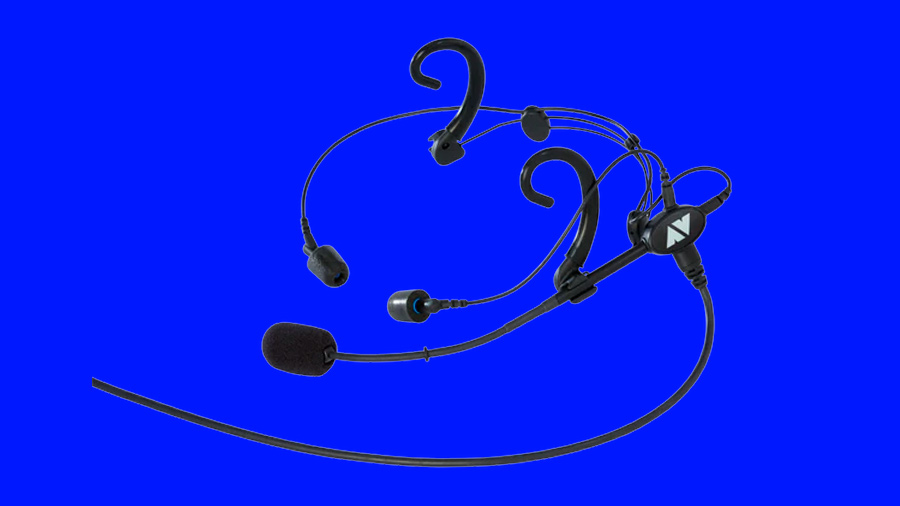
Specs
- No battery (Passive Noise Reduction Only)
- In-ear
- 3.5mm
- < 2 oz (56g)
- 3-year Warranty, 30-Day Money Back Guarantee
- Foam Tips
Pros
- TSO certified
- Light
Cons
- Expensive
- Foam tips need to be replaced every few months
The Clarity Aloft company has an impressive line of in-ear headsets, the most noteworthy being the non-TSO certified $795 Link with Bluetooth functionality and the TSO certified Flex at $775.
The Clarity Aloft Flex aims to provide a high-end PNR in-ear experience. In many ways, it delivers: The Clarity Aloft Flex features a 3-year warranty with a 30-day money-back guarantee, great build quality, 3.5mm audio input, TSO certification, and a weight of less than 2 oz (56g).
However, the Flex falls short in one department: The price. At $775, the Flex is only $225 cheaper than the Bose ProFlight Series 2 with ANR, Bluetooth, and gel tips. While the Clarity Aloft Link has Bluetooth functionality for $20 more at $795, it is not TSO certified and uses foam tips.
In comparison, the AXIS has all the features of the Flex except for the TSO certification, at a significantly lower price of $475.
Conclusion
Aviation headsets aren’t cheap, but they should be considered an investment in your health and comfort. Similar to the clothes you wear, the headset you will find most comfortable will be a personal choice and will depend on factors such as the type of flying you do and how often you fly. Your first headset will likely not be your last, so don’t be afraid to experiment!
